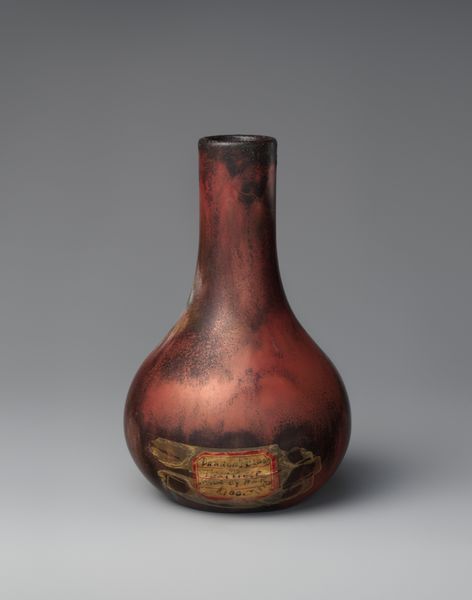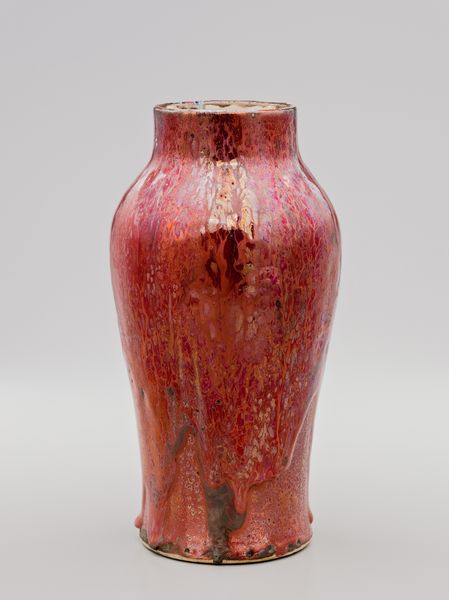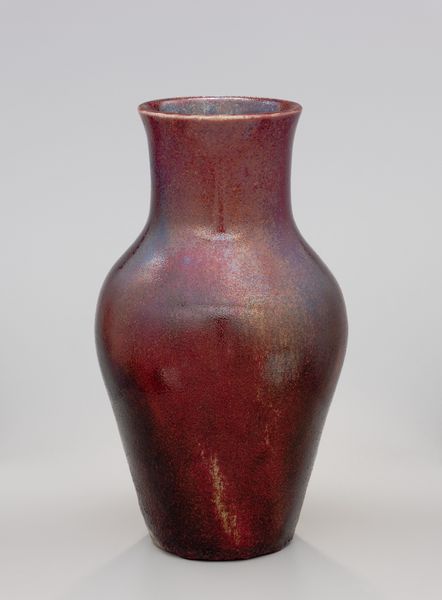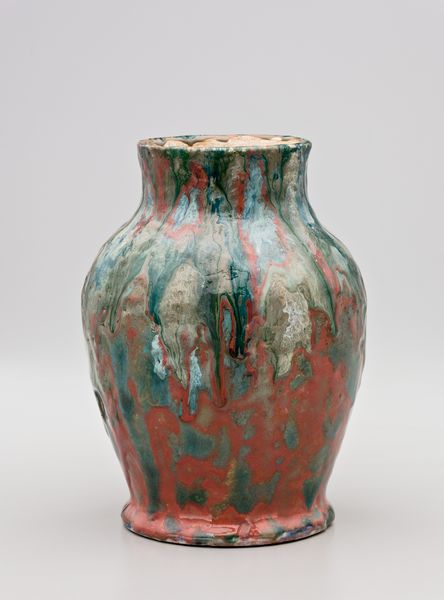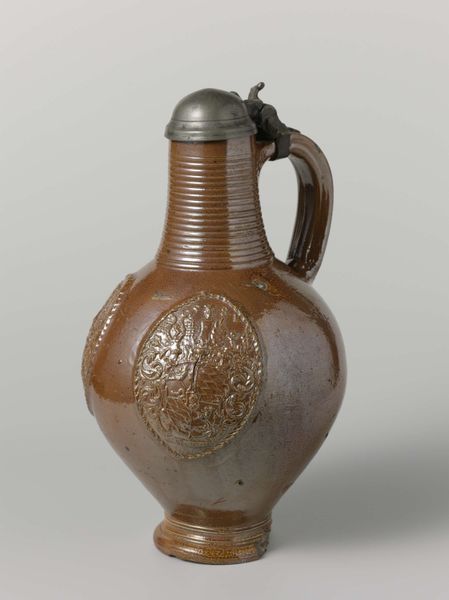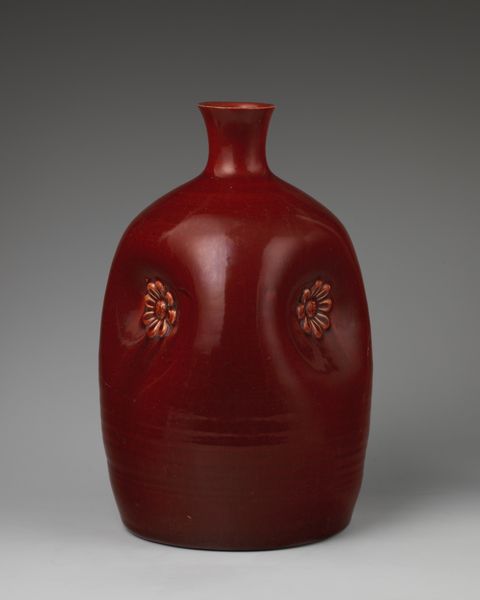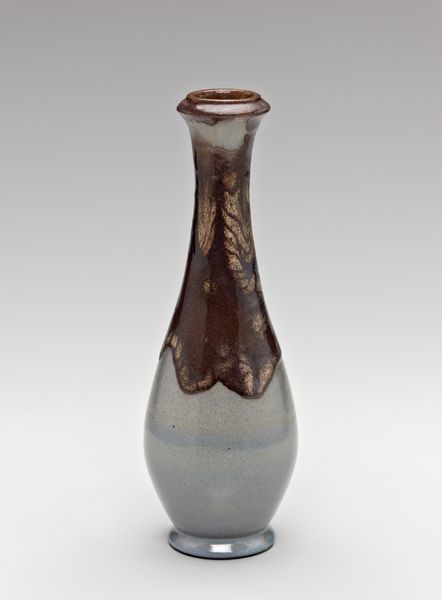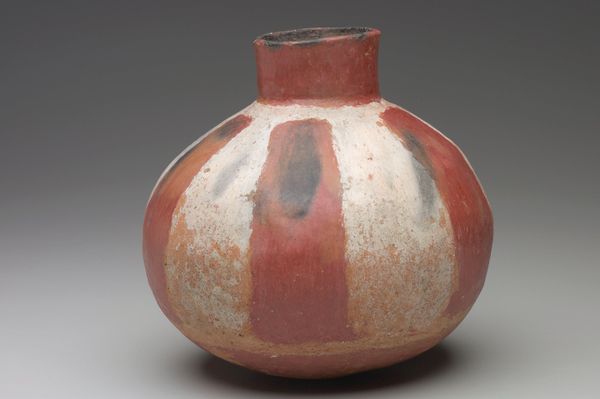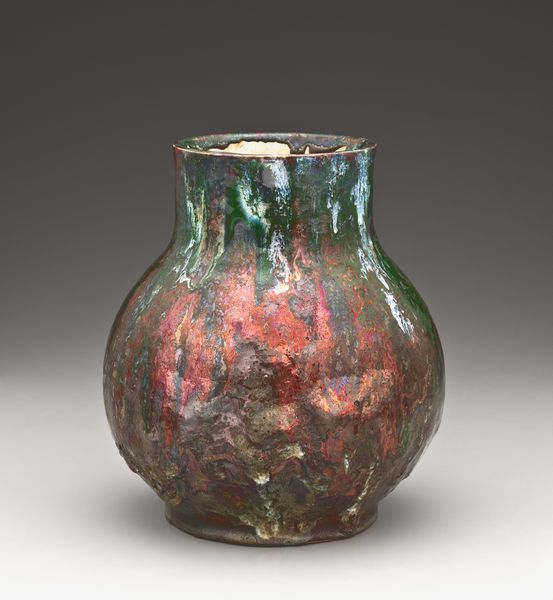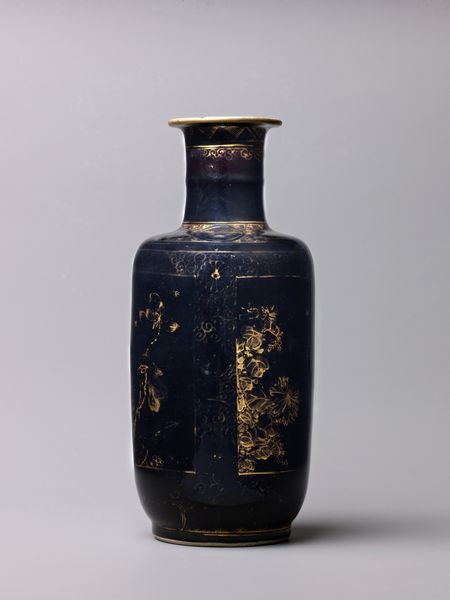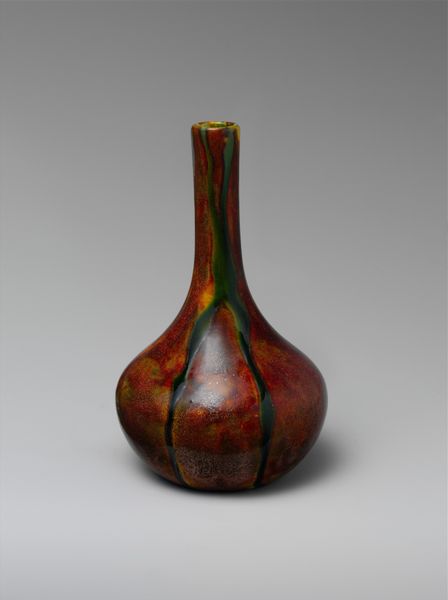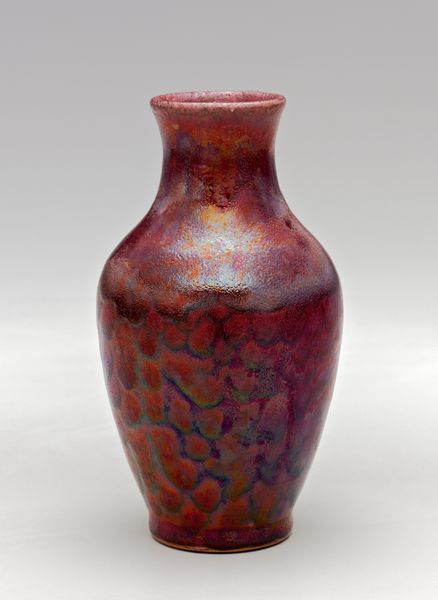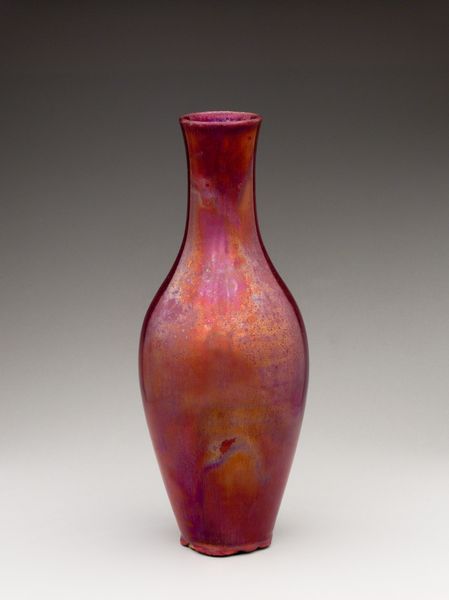
ceramic, earthenware
#
pottery
#
arts-&-crafts-movement
#
ceramic
#
earthenware
#
stoneware
#
ceramic
#
abstraction
#
decorative-art
Dimensions: 7 x 3 3/8 in. (17.8 x 8.6 cm)
Copyright: Public Domain
Curator: Standing before us is a piece entitled "Vase," crafted between 1882 and 1892 by Chelsea Keramic Art Works. It’s part of the decorative art collection here at the Metropolitan Museum. You'll notice it's made using ceramic and earthenware techniques, placing it firmly within the Arts and Crafts movement. Editor: It looks like something you'd find washed up on a Martian beach! All these blurred, reddish hues and porous textures... sort of alien and inviting at the same time. It also feels weirdly... incomplete? Like something unfinished, maybe abandoned midway through. Curator: Well, the incompleteness might be the point. The Arts and Crafts movement really reacted against industrial mass production. Imperfection and uniqueness were prized. This vase demonstrates an engagement with material that celebrates handmade quality over manufactured polish. The mottled colors suggest this. Editor: That makes total sense when you factor in that timeframe and social movement, especially when so much during this time tried to create faux polish through artificial assembly methods. But it still strikes me as raw… unrefined. Curator: Indeed, this raw character places the vessel comfortably in the broader social and artistic context where experimentation and unique expression are more emphasized over stringent standards, an important idea that helped broaden design parameters as culture transitioned from the nineteenth century onward. Editor: It is interesting how what we may casually view as aesthetically compromised aligns neatly with broader creative intentions. The piece actually strikes me in a different light now; it has an element of defiant confidence to it. It suggests 'take me as I am', which honestly I'm starting to enjoy quite a bit! Curator: It is pieces like these that encourage one to view history not only through a wide angle lens, but up close through the smallest details. To really get a sense for the world behind common everyday items makes for much better context when we try to evaluate culture! Editor: Absolutely. I began feeling detached and unsettled, but that’s only part of its story. Understanding this piece within its world truly transformed my impression! Now that is an enriching interaction.
Comments
No comments
Be the first to comment and join the conversation on the ultimate creative platform.
